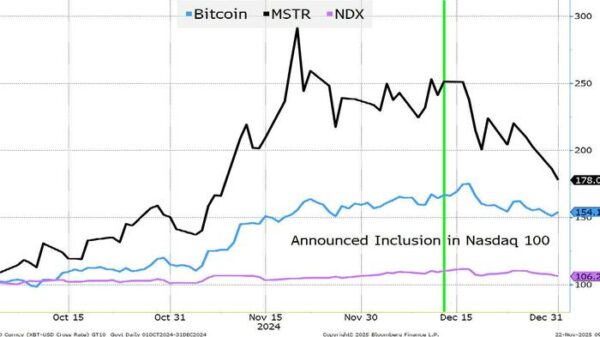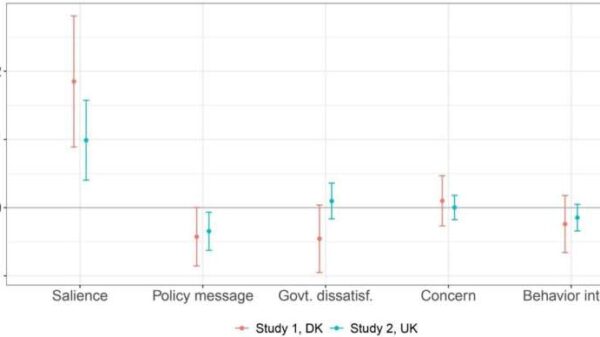The tragic assassination of Minnesota state Rep. Melissa Hortman and her husband, Mark Hortman, in June has sparked renewed dialogue surrounding political violence and the underlying factors that contribute to such acts. While initial media coverage emphasized the attack’s implications for progressive politicians, it often overlooked a critical aspect: the couple’s advocacy for gender issues, including reproductive rights and LGBTQ+ rights. This oversight has been highlighted by Cynthia Miller-Idriss, an expert in violence and extremism, who recently addressed this gap in a presentation in Washington, D.C.
Miller-Idriss noted that the individual charged in the Hortmans’ deaths had a history of targeting abortion providers and individuals supporting abortion rights. His background as part of an evangelical ministry, which included preaching against abortion and condemning LGBTQ+ individuals, underscores the need for a broader understanding of the intersection between gender-based bigotry and violent extremism.
Many scholars and experts in domestic violence affirm that hostility towards gender can serve as a precursor to violent extremism. Miller-Idriss argues that it is crucial for national security officials to recognize this link, as current threat models fail to address misogyny or gender-based discrimination adequately. For example, a 2018 FBI report outlining warning signs of active shooters did not include any references to gender issues, a significant gap in understanding the motivations behind such violence.
In 2019, the Office of the Director of National Intelligence categorized violent domestic extremism into three broad categories: identity-based, anti-government, and “other.” This classification relegated misogynistic and anti-LGBTQ violence to a vague catch-all group, further obscuring the critical role that gender-based violence plays in these incidents.
“Violence that is rooted in gendered issues is a huge predictor of — and possibly the biggest predictor, in some studies — of trajectories that lead to mass violence,” Miller-Idriss stated. She emphasized that over half of mass shooters specifically target intimate partners, illustrating how domestic violence and violent extremism exist on a continuum.
Through her research, Miller-Idriss has explored the pipelines leading to extreme acts of violence, working with educators and community leaders to develop strategies that can help prevent radicalization among youth. Her recent book, “Man Up: The New Misogyny and the Rise of Violent Extremism,” published by Princeton University Press, compiles research demonstrating that misogyny frequently emerges in the histories of violent extremists.
Miller-Idriss defines misogyny broadly, encompassing anti-LGBTQ+ beliefs as part of a larger pattern of patriarchal enforcement. Gender attitudes often do not serve as the primary motivator for violent extremism but contribute to a foundation that leads individuals toward radicalization. For instance, the shooter in the 2022 Buffalo supermarket massacre, which resulted in the deaths of ten Black individuals, expressed concerns about declining White birth rates in his manifesto. Similarly, the perpetrator of the 2015 shooting at a Black church asserted that his victims had violated White women before committing his crime.
A study analyzing fatal mass shootings from 2014 to 2019 revealed that 59 percent of these incidents involved domestic violence, with 68 percent of shooters having a history of such violence. Victims of mass shootings linked to domestic violence are less likely to survive than those involved in other types of mass shootings.
Miller-Idriss argues that the pervasive nature of gender inequality contributes to the neglect of misogyny as a factor in extremism. She points out that many people experience gender divides throughout their lives, making it a significant, albeit uncomfortable, issue. Additionally, a lack of incentives for law enforcement to document misogyny-related crimes leads to an inadequate understanding of their prevalence in extremist groups.
At the institutional level, domestic violence and violent extremism are often treated as separate issues, with different governmental departments handling them. This division has prompted Miller-Idriss to focus more intently on gender in her research. “In our field, domestic violence is handled by the Department of Justice, seen as a local interpersonal issue, while mass violence is managed by the Department of Homeland Security as a national security issue,” she explained.
To address this gap, Miller-Idriss advocates for the integration of misogyny into national security threat models and the creation of enhanced charges for sex trafficking so that extremist groups can be held accountable for gender-based violence involved in drug or arms trafficking cases.
Miller-Idriss encourages individuals to take proactive steps in combating political violence and extremist behavior by addressing hostile sexism within their communities. Engaging children in conversations about their online experiences and the gender messages they receive can strengthen resilience against harmful narratives and scapegoating.
To assist in these efforts, the Polarization and Extremism Research & Innovation Lab (PERIL) has developed resource kits for parents, educators, coaches, and faith leaders. These kits aim to equip adults with tools to combat radicalization and gender-based bigotry among youth. “Discuss the gendered grievances and propaganda that kids encounter on their devices,” Miller-Idriss advises, emphasizing the importance of making these conversations relatable rather than preachy.
By addressing the roots of hostile sexism, communities can contribute to breaking the cycle of political violence and fostering a safer environment for everyone.




































































